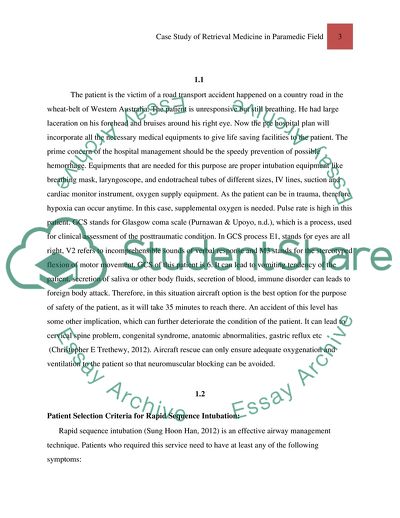Retrieval Medicine in Paramedics area( Case study 1) Essay. https://studentshare.org/medical-science/1836396-case-study-of-retrieval-medicine-in-paramedic-field
Retrieval Medicine in Paramedics Area( Case Study 1) Essay. https://studentshare.org/medical-science/1836396-case-study-of-retrieval-medicine-in-paramedic-field.


